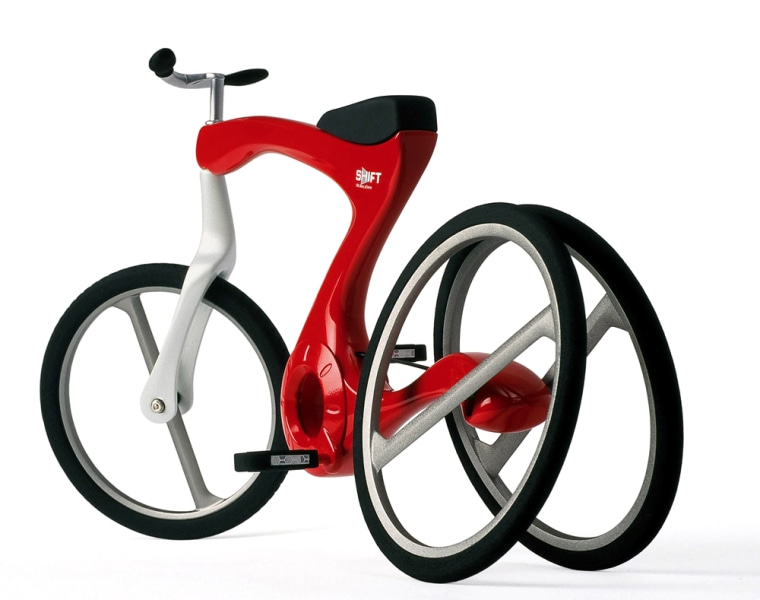Who can forget the thrill — and terror — of that first solo bicycle ride: Mom or Dad letting go, the magic of two-wheeled freedom and, inevitably, toppling over in a knee-scraping crash?
Three Purdue University industrial designers who tapped into memories of their own childhood cycling misadventures have built a bike that ditches the training wheels but keeps rookies stable.
Called SHIFT, it slowly transforms from a tricycle to bicycle configuration as the rider pedals faster, then returns to trike formation as the rider slows down.
Lead designer Scott Shim hopes the design, which won top honors recently at an international bicycle design competition, can help children slowly gain the skill and courage to pedal off on their own.
The design features a single front wheel and two slim rear wheels that are initially splayed outward to stabilize and prevent the rider from toppling over. As the rider accelerates and leans forward, the rear wheels shift inward, narrowing into a single wheel surface that essentially makes it a two-wheel venture.
As the bike slows, the rear wheels tilt back to the tricycle formation.
Shim, an assistant professor of industrial design, said he and his two collaborators came up with the idea while brainstorming a concept to enter in the 9th International Bicycle Design Competition in Taipei, Taiwan.
He and recent Purdue design graduates Matthew Grossman and Ryan Lightbody traded childhood memories of looking back frantically at their father or mother after they sent them on their way on initial solo rides.
"That was the common thing — looking back to see if your dad is holding your seat, and having that fear of crashing or falling all the time while you're riding," said Shim, an assistant professor of industrial design whose 4-year-old son is at the tricycle stage.
"So we thought if we could make a tricycle kind of bicycle, it would get that burden off the child's shoulders so he or she could focus on trying to learn to ride."
The key to their bike, which resembles a trike with crooked wheels while at rest, is a belt with a spring mechanism that pulls the rear wheels inward.
Their design was among 24 of 853 initial entries chosen for the competition's final round, in which teams had three months to build a quarter-scale model of their bike.
Judges were so impressed with the Purdue team's design they awarded it the $15,000 top prize and had a full-scale prototype built for display.
Shim and his collaborators are now working to get their design patented and find an investor to manufacture the bike. Three companies — two from Korea and one from Taiwan — are interested, Shim said.
He said he has already received more than 100 e-mails from consumers asking when the bike might hit the market.
Ryan Atkinson, brand manager at Waterloo, Wis.-based Trek Bicycle Corp., said the design, which has won the praise of the Industrial Design Society of America, would have wide appeal to able-bodied children and children and adults with special needs.
"They've really touched on something unique in the way the bike stabilizes itself," he said.
Jerry Clements, a family physician from New York City, contacted Shim in hopes he could buy a version of the bike for his two 6-year-old daughters, now in the training-wheel stage. He said it's been frustrating helping his girls learn to ride.
"You can get a kid up on two wheels and as long as they're moving and they're looking where they're going, they're going to do OK. But once they slow down and stop, they fall over, get scared and get off. Then you have to start all over again."
